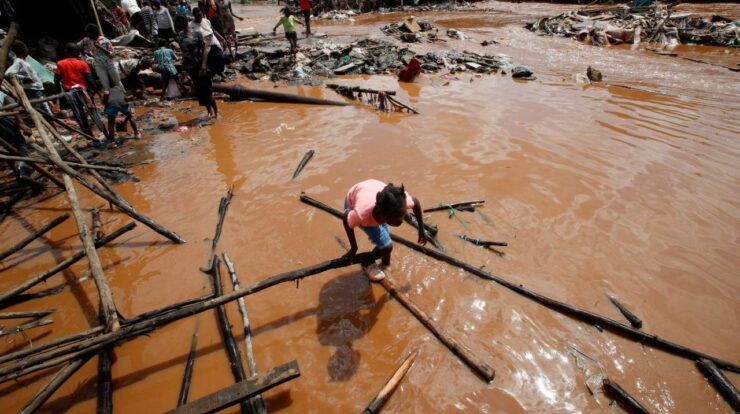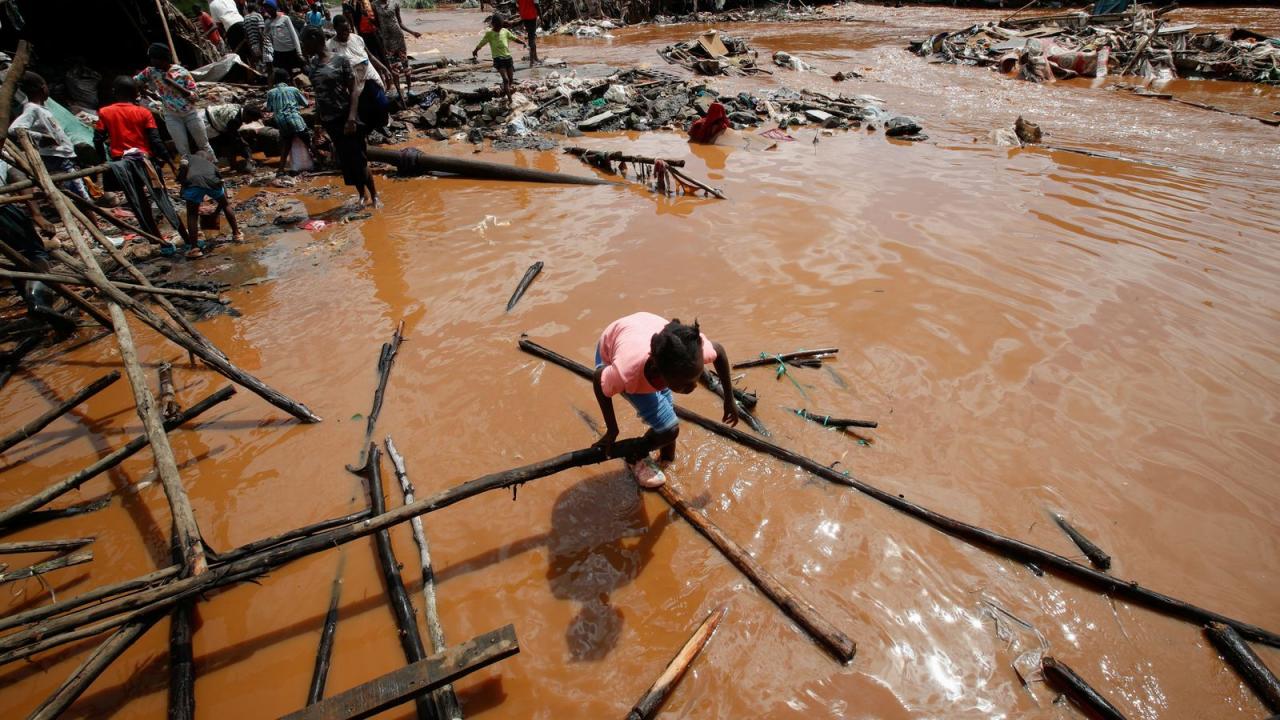
Kenya nairobi flooding – Kenya’s capital city, Nairobi, has been plagued by severe flooding in recent years, causing significant damage and disruption to its infrastructure and communities. The city’s unique geographical location and climate, combined with inadequate drainage systems and poor waste management practices, have contributed to the escalating flood risks.
This comprehensive overview delves into the causes, impacts, and mitigation strategies employed to address flooding in Nairobi. By examining specific case studies and future projections, we aim to shed light on the complexities of this pressing issue and explore potential solutions for a more resilient urban environment.
Nairobi’s Geography and Climate

Nairobi, Kenya’s capital city, is located in the south-central part of the country, on the Athi River. The city lies at an elevation of approximately 1,660 meters (5,446 feet) above sea level. Nairobi experiences a tropical savanna climate, with warm temperatures throughout the year and distinct wet and dry seasons.
The rainy season in Nairobi typically runs from March to May and October to December. During these months, the city receives heavy rainfall, which can often lead to flooding. The average annual rainfall in Nairobi is around 800 millimeters (31 inches).
The combination of Nairobi’s geographical location and climate makes it particularly susceptible to flooding. The city’s low elevation and flat terrain make it difficult for rainwater to drain away quickly. Additionally, the heavy rainfall during the rainy season can overwhelm the city’s drainage systems.
Causes of Flooding in Nairobi
The primary causes of flooding in Nairobi include:
Inadequate Drainage Systems
Nairobi’s drainage systems are inadequate to handle the volume of rainwater that falls during the rainy season. The city’s drainage channels are often clogged with debris, which prevents water from flowing away quickly.
Heavy Rainfall
Nairobi experiences heavy rainfall during the rainy season. The intensity of the rainfall can overwhelm the city’s drainage systems, leading to flooding.
Poor Waste Management
Poor waste management practices in Nairobi contribute to flooding. Garbage and debris are often dumped in drainage channels, which can block the flow of water.
Encroachment on Waterways
The construction of buildings and other structures on waterways has reduced the capacity of the city’s drainage systems. This can lead to flooding when heavy rains occur.
Impacts of Flooding in Nairobi
Flooding in Nairobi can have a devastating impact on the city’s infrastructure, including:
Damage to Roads and Bridges
Flooding can damage roads and bridges, making them impassable. This can disrupt transportation and cause economic losses.
Disruption of Transportation
Flooding can disrupt transportation in Nairobi, as roads and bridges may be closed due to flooding. This can make it difficult for people to get to work, school, and other important destinations.
Loss of Property and Livelihoods
Flooding can cause the loss of property and livelihoods. Homes and businesses can be damaged or destroyed by floodwaters. This can lead to economic losses and displacement of people.
Mitigation and Adaptation Strategies
Several strategies have been implemented to mitigate flooding in Nairobi, including:
Improving Drainage Systems
The government of Kenya has invested in improving Nairobi’s drainage systems. This includes the construction of new drainage channels and the rehabilitation of existing ones.
Implementing Flood Warning Systems
The Kenya Meteorological Department has implemented a flood warning system in Nairobi. This system provides early warnings of flooding, which can help people to evacuate to safety.
Resettlement of Communities from Flood-Prone Areas
The government of Kenya has resettled communities from flood-prone areas in Nairobi. This has helped to reduce the risk of flooding for these communities.
Case Studies of Flooding Events
Nairobi has experienced several major flooding events in recent years, including:
The 2018 Floods
In April 2018, Nairobi experienced heavy rainfall that led to severe flooding. The floods caused widespread damage to infrastructure and property, and displaced thousands of people.
The 2020 Floods
In April 2020, Nairobi experienced another major flooding event. The floods were caused by heavy rainfall and poor drainage. The floods caused damage to infrastructure and property, and displaced thousands of people.
Future Projections and Planning

Climate change is expected to increase the frequency and severity of flooding in Nairobi. The city is already working to develop plans to adapt to climate change, including:
Developing Early Warning Systems, Kenya nairobi flooding
Nairobi is developing early warning systems to provide advance notice of flooding. This will help people to evacuate to safety and reduce the risk of damage to property.
Improving Drainage Systems
Nairobi is investing in improving its drainage systems. This includes the construction of new drainage channels and the rehabilitation of existing ones.
Resettlement of Communities from Flood-Prone Areas
Nairobi is considering resettling communities from flood-prone areas. This will help to reduce the risk of flooding for these communities.
Last Word
As Nairobi continues to grapple with the challenges posed by flooding, it is imperative to prioritize sustainable urban planning and infrastructure development. Embracing innovative approaches to drainage systems, implementing early warning systems, and investing in community resilience are crucial steps towards mitigating the impacts of future flooding events.
By working together, stakeholders can create a more resilient and flood-proof Nairobi for generations to come.
Popular Questions: Kenya Nairobi Flooding
What are the primary causes of flooding in Nairobi?
Inadequate drainage systems, heavy rainfall, poor waste management, and encroachment on waterways are the major contributing factors to flooding in Nairobi.
How has flooding impacted Nairobi’s infrastructure?
Flooding has caused significant damage to roads, bridges, and other infrastructure, leading to transportation disruptions and economic losses.
What strategies are being implemented to mitigate flooding in Nairobi?
Improving drainage systems, implementing flood warning systems, and resettling communities from flood-prone areas are some of the strategies being employed to reduce the impacts of flooding.